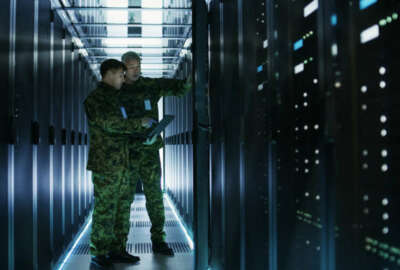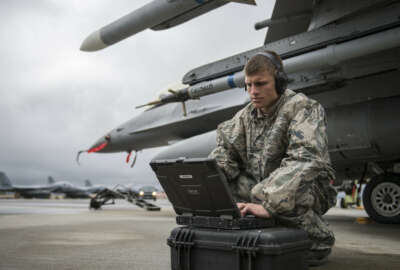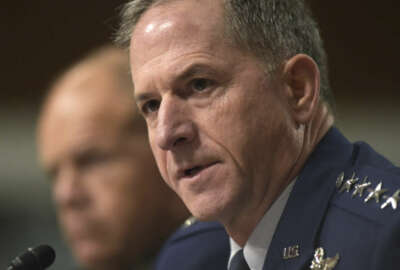
NORTHCOM focusing budget priorities on data management for JADC2
The combatant command is trying to bring in more data to make a workable grid for the new command and control platform.
Best listening experience is on Chrome, Firefox or Safari. Subscribe to Federal Drive’s daily audio interviews on Apple Podcasts or PodcastOne.
A large piece of U.S. Northern Command’s budgetary focus over the next two years will be informed by a focus on sharing and collecting data for the military’s future interconnected command and control system.
In order to make the Joint All Domain Command and Control (JADC2) system work for the military’s forthcoming operations, it needs to collect the right data to make decisions, and be able to get that data to the proper channels.
“NORTHCOM has worked to really dramatically advance our capabilities for homeland defense across three categories,” Air Force Lt. Col. Matthew Strohmeyer, NORAD and NORTHCOM J8 JADC2 development lead, said Monday at a GovExec event. “The first is domain awareness, the second is information dominance, which is being able to get decision information to decision makers faster. Finally, there’s decision superiority, allowing us to make decisions faster and better than our adversaries so that we are competitors, so that we can ensure that we retain that deterrence ability.”
Domain awareness is where NORTHCOM is putting a lot of interest.
NORTHCOM commander Air Force Gen. Glen VanHerck said earlier this month that the military needs to create a layered sensing grid to provide a persistence and complete battlespace awareness. That grid will go from subspace to land to sea and even to cyberspace. The awareness is provided by sensors on drones, intelligence reports from real people, satellite images, radar and many other ways of collecting information.
The problem is that the data is not always getting to the place it needs to go.
“Much of the technology to achieve this already exists today,” VanHerck said. “The data is getting trapped in regional functional service stovepipes. We have to break this tendency and change our culture and make the data and information shareable across all domains across all combatant commands, all services, and I would argue across the whole of government and with our allies and partners.”
It’s not just agency separation that NORTHCOM is focusing on, though. It’s also looking geographically at how data is frozen in one sector.
“The Defense Department must adapt away from regionally focused plans and gravitate towards globally focused strategies, plans, force management, force design and development, each integrating the homeland in our strategic deterrence force,” VanHerck said. “This really all starts with data. In many cases, the data is global. It exists today and we just need to pry it from the stovepipe, so we can ingest it, aggregate it, process it, disseminate and display the data.”
VanHerck said he supports redesigning the way DoD manages data in order to facilitate JADC2.
The general pointed to NORTHCOM’s Pathfinder program as a prime example for the way technology and data can work well together in the way JADC2 will.
The initiative is a data ecosystem, which lives in a cloud and brings together many different types of information from various sensors into one narrative.
NORTHCOM is working with the Defense Innovation Unit and nontraditional defense companies Kinetica and Raven Black on the program.
“We approached it as a data problem,” VanHerck said. “Pathfinder is an operational example in effect today of the JADC2 concept. It ingests air domain sensor data from multiple sources, including commercial and military. It leverages software automation, it uses machine learning models to produce and fuse a common operating picture. With Pathfinder, our air battle managers no longer have to manually track data to determine if the objects they see on their scopes are real. This is critical. In the past, we’re using phones, manually entering data, spreadsheets, etc. With fused data, we have dramatically increased the decision space for our key decision makers.”
Strohmeyer said NORTHCOM is working with both prime and nontraditional contractors on JADC2, however, the command is trying to cultivate new partners to add the latest capabilities.
“It’s a culture battle of using new technologies and challenging our paradigms about how the government thinks about data,” he said. “It’s about how we think about a speed and change and to go fast, fail forward and think about risk differently. We should be willing to take prudent risk and take an 80% and go put it out in the field and prototype if it actually works.”
Copyright © 2025 Federal News Network. All rights reserved. This website is not intended for users located within the European Economic Area.
Scott Maucione is a defense reporter for Federal News Network and reports on human capital, workforce and the Defense Department at-large.
Follow @smaucioneWFED






